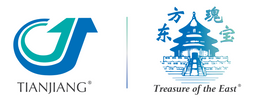Chinese Medicine and Long COVID
By Dr. Ann Wang, for educational purposes only
According to the WHO, the long-term symptoms of COVID is the sequelae of COVID. The official clinical definition of Long COVID or post-acute sequelae SARS-CoV-2 infection ("PASC") was first announced on October 6, 2021. The symptom usually occurs in people who have been diagnosed with or may be infected with coronavirus, and usually "appears within 3 months of infection, persists for at least 2 months, and cannot be explained by other diagnoses."
Common PASC symptoms include fatigue, shortness of breath and cognitive impairment, often affecting daily life. PASC may also cause chest pains, loss of smell and taste, muscle weakness, and heart palpitations, and even have long-term effects on multiple body organs such as the lungs, cardiovascular and nervous systems, and mental health. At present, it is difficult to count the varieties of PASC observed in the world. Severe fatigue is the most common symptom, and even mildly ill people may experience lasting and serious health problems.
It is unfortunate that there is still no effective western medicine that can treat the symptoms of PASC. However, with the increase in reports of PASC symptoms, there is an urgent need to find suitable option to alleviate the emotional, physical problems, and to improve the quality of life.
Traditional Chinese medicine has a history of being used to relieve and restore body function since ancient times. From the perspective of traditional Chinese medicine, the recovery period is mostly categorized as an issue of lung and spleen damage and deficiency in both qi and yin. This is in the TCM category of "Yi Bing." In terms of formulas, Xiang Sha Liu Jun Zi Decoction and Mai Men Dong Decoction are generally suggested to support these PASC cases.
If custom formulation is possible, the formulations recommended by the Chinese Health Commission can also be considered:
1. Lung-and Spleen Qi deficiency: Clinical manifested as shortness of breath, fatigue, anorexia, nausea, fullness, weak stools, and unpleasant stools. Tongue pale, greasy coating.
Recommended formula: Fa Ban Xia 9g, Chen Pi 10g, Dang Shen 15g, Huang Qi 30g, Chao Bai Zhu 10g, Fu Ling 15g, Huo Xiang 10g, Sha Ren 6g, Gan Cao 6g
2. Qi and Yin deficiency: Clinical manifested as fatigue, shortness of breath, dry mouth, thirst, palpitations, excessive sweating, poor appetite, low or no fever, dry cough and less phlegm. Dry tongue with little fluid, thin or weak pulse.
Recommended Formula: Nan Sha Shen and Bei Sha Shen 10g each, Mai Dong 15g, Xi Yang Shen 6g, Wu Wei Zi 6g, Sheng Shi Gao 15g, Dan Zhu Ye 10g, Sang Ye 10g, Lu Gen 15g, Dan Shen 15g and Gan Cao 6g.
Acupuncture points: Zhongwan, Qihai, Tianshu (bilateral), Neiguan (bilateral), Zusanli (bilateral) and other points.
Cupping therapy: Select acupoints such as Feishu (bilateral), Geshu (bilateral), Pishu (bilateral), and wind gate (bilateral).
世卫组织在官方声明中称,新冠长期症状,就是新冠后遗症。2021年10月6日首次公布“新冠长期症状”的官方临床定义。这一症状通常发生在已确诊或可能被新冠病毒感染的人身上,通常“在染疫后3个月内出现、持续至少2个月,并且无法由其他诊断解释”。
常见的“新冠长期症状”包括疲劳、呼吸急促和认知功能障碍,通常会影响日常生活。另外,患者也可能胸痛、嗅味觉失灵、肌肉无力和心悸等情况,甚至对肺部、心血管和神经系统等多个身体部位以及心理健康产生长期影响。目前很难统计全球“长新冠”患者具体人数。新冠长期症状最常见的是严重疲劳, 新冠长期症状不仅让重症病人需要更长时间康复,而且即使是轻症患者也可能会遇到持久而严重的健康问题.
可惜的是,至今仍没有有效的西药能根治「长新冠」症状。但随着患有「长新冠」症状人数增加,寻找合适的治疗方法,减轻患者因疾患而致的情绪问题及生活不便,提高生活质量,显得十分迫切。
中医药自古以来对缓解疾病所造成的后遗症及恢复机体功能有很好的优势。在中医的角度来看,新冠肺炎恢复期大多属中医学「疫病」中肺脾受损及气阴两虚的范畴,治疗原则应以扶正祛邪为主。在用药方面,临床上一般可选用中药香砂六君子汤加麦门冬汤。
如果可以配制复方,这个中国卫健委建议的这两个处方也可以采用:
- 肺脾气虚证: 临床表现:气短,倦怠乏力,纳差呕恶,痞满,大便无力, 便溏不爽。舌淡胖,苔白腻。 推荐处方:法半夏 9g、陈皮 10g、党参 15g、炙黄芪 30g、 炒 白术 10g、茯苓 15g、藿香 10g、砂仁 6g、甘草 6g。
- 气阴两虚证: 临床表现:乏力,气短,口干,口渴,心悸,汗多,纳差, 低 热或不热,干咳少痰。舌干少津,脉细或虚无力。 推荐处方:南北沙参各 10g、麦冬 15g、西洋参 6g,五味子 6g、生石膏 15g、淡竹叶 10g、桑叶 10g、芦根 15g、丹参 15g、 生甘草 6g。
拔罐疗法:选取肺俞(双侧)、膈俞(双侧)、脾俞(双侧)、风门(双侧)等穴位。
穴位:中脘、气海、天枢(双)、内关(双)、足三里(双)等穴。



















